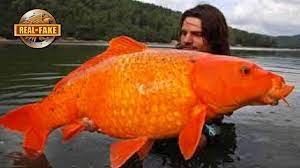Pets You Should Never Release Into The Wild!
7 years ago admin 0
Do Not Release
From Giant Goldfish to cute chameleons, here are 10 pets, some of which are part of the aquarium fishkeeping hobby, you should never release into the wild…
10.
Green Iguanas
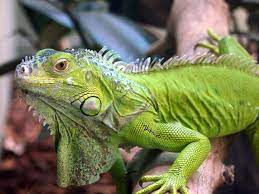
Iguanas are a popular pet for collectors of exotic animals because of how cute they look and supposedly they are easy to take care of. Unfortunately the idea that they are simple to look after was likely spread by those who sell them, because they actually need a strict environment and diet to survive. They can also be difficult to tame and handle, especially when they are fully grown, and this has led to a large number being released into the wild. They are naturally from central and south America, and thrive in warm environments. This has meant that those released in similar climates, such as those found in parts of California, Florida and Hawaii, have thrived and begun to breed.
This has been detrimental to the local ecosystems where they compete with native species for food, and will prey on species that haven’t adapted to deal with these kind of threats. As a result, Iguanas are illegal to own in Hawaii because of the potential devastation and havoc they can cause on the islands. In Florida, the populations of feral iguanas have caused extensive damage to vegetation and local wildlife, so if you do decide to get one please be a responsible owner and don’t release them into the wild!.
9.
Cuban Tree Frog
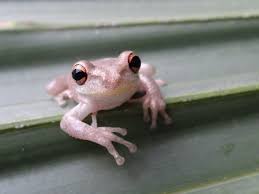
The Cuban tree frog is troublesome in Florida. These cute frogs are a favorite of exotic species collectors, but the Cuban Tree Frog is causing serious issues across Florida. They are quite difficult to identify among other frog species, something that is made even more difficult by the way that they can change color. They are originally native to Cuba, the Bahamas, and the Cayman Islands, and are thought to have been first introduced to Florida in the 1920’s. It’s the recent popularity of keeping them as pets, though, that has led to an explosion in their numbers in the wild as a result of collectors releasing them.
Cuban Tree Frogs are an aggressive species that feed on at least five different species of native Floridian frogs, as well lizards, small snakes and tadpoles. They are also able to survive in urban areas, and will take over birdhouses, ponds and birdbaths where they lay their eggs. They have been responsible for massive changes in the ecosystem, and have even been known to affect humans by causing power outages?? So they are a danger to environments where they aren’t native, and so must not be released under any circumstances.
8.
Rabbits

Rabbits are another incredibly popular pet for owners around the world, but when theyare released into non-native environments they can cause serious damage. The best example of this is in Australia where they were released for hunting in 1859. Only 24 were set free, but by 1920 there were an estimated 10 billion across the country. There have been numerous attempts to curb the population growth, but with their breeding, ability to feed on most vegetation, and overall resilience, rabbits still roam Australia in huge numbers and pose a threat to many of the natural species like the bilby and burrowing bettong by taking over their burrows.
7.
Goldfish

They may seem harmless enough, and are a popular pet for adults and children alike around the world, but releasing your pet fish into the wild can have disastrous consequences for your local environment. Nowhere has this effect been seen more clearly than in Australia where the problem has gotten out of hand. Notorious for their strict rules on bio-containment, it’s why Johnny Depp and Amber Heard got in trouble for allegedly sneaking in their dogs. The Australians have good reason for being that way. In 2016 researchers from the Murdoch University in Perth caught goldfish that weighed up to2kg and were up to 30 centimeters long.
These large animals are thought to have descended from a small variety that were being kept as pets and released into the wild a few years before. By feeding on more food and disrupting the ecosystems, these fish can spread and cause significant damage by killing off all the native species. Goldfish the size of dinner plates have also been found in Alberta, Canada, and have led to fines of $100,000 dollars to those that release non-native species into the wild. Angler Raphael Biagini captured a legendary “giant goldfish” out of a lake in the south of France. Fellow fishermen had spent 6 years trying to capture this orange koi carp weighing 30lbs. The only way this fish ended up in the lake, was because someone was trying to get rid of it.
6.
Red Eared Slider Turtle

The red eared slider turtle is the most common species of pet turtle in the United States. It’s native to the southern US and Northern Mexico, but as a non-native species in other areas it has caused havoc in waterways across the country as a result of owners releasing them into the wild. So the International Union for Conservation of Nature has designated this species as one of the world’s 100 most invasive species. There are two reasons for this, first because of the diseases they carry, and second because of their temperament.
The turtles can carry salmonella bacteria, which is potentially dangerous to humans and other species in the wild, and their aggressive behavior means that they either kill or scare off other turtles from the environment so they can take over. This has been happening in the state of Washington, for example, where the numbers of pacific pond turtles have been significantly declining. As the most popular turtle to be kept as a pet, red eared sliders are released in large quantities every year by owners who aren’t able to take care of them as they get bigger or just get bored. This is the species that provided the basis for the Teenage Mutant Ninja Turtles who were all red eared sliders that had been set free into the New York sewers.
5.
Chameleons

A Chameleon is a cute and popular pet, but….Chameleons are beautiful and unusual, cute creatures, so it comes as no surprise that they are a popular choice for a pet. What’s not to love? aren’t suitable for beginner owners, though, and many people end up regretting getting them. They have very specific living and dietary requirements, and are not really happy being petted or handled really. A lot of people don’t know what they are getting themselves into, or why their chameleon doesn’t love them back, so a lot of people just let them go fend for themselves.
Depending on where they live, like other animals, they can prove to be really dangerous for the local wildlife. Veiled Chameleons have proved to be a particular problem in Hawaii and Florida (here we go again!).
chameleons originally come from Saudi Arabia and Yemen, so fit in well with the climate, and the humidity doesn’t seem to bother them at all! They easily blend in with the background so they have become a highly invasive species. They are also able to adapt their diet and habitat depending on what becomes available, and lay up to 270 eggs per year so rapidly increase in numbers. The Floridian veiled chameleons that have descended from released pets are spreading across the state into the everglades and causing serious issues. This has led to the introduction of amnesty days where residents can hand in their unwanted pets, but in Hawaii it is totally illegal to own one, with perpetrators risking fines of up to $200,000.
4.
Hermit Crabs

Hermit Crabs are often seen for sale on beach boardwalks with painted shells to attract customers, but keeping them as pets is extremely unfair to the creatures. In the wild they can live for up to 30 years, but in captivity they rarely survive more than a year because of the chemicals they have been painted with, and lack of proper food being fed to them. They struggle to breathe in a tank and, being such sociable animals, the fact they are often kept alone makes their existence pretty miserable.
With this said, you shouldn’t release your captive crabs into the wild either. They would be very unlikely to survive because they live in very particular environment sand would have very little chance of meeting up with a colony that they would need to survive. There’s also the chance that the crab you have will carry bacteria and infections from the tank or area that they were captured; something the local wildlife near you may not be able to deal with. There’s a strong possibility that releasing a hermit crab into the wild could cause widespread illness to the entire ecosystem. The best solution, avoid getting a hermit crab!
3.
Giant African Land Snails
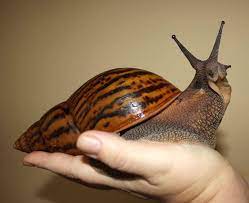
Giant African Land Snails are illegal in the US.Giant African Land Snails are a delicacy in parts of Africa, but are actually illegal in the United States because of how destructive they can be to the natural environment. They are first thought to have been brought to the country as pets in 1966 when a young boy brought three to Miami. His grandmother released them into their garden when they became unable to care for them,and within seven years the population had risen to over 18,000. It took the state of Florida over 10 years to get rid of them, at a cost of over a million dollars. Even so, they are still around are every now and then there is a snail outbreak.
They are already a prevalent pest across Hawaii and the Caribbean, and authorities frequently are called in to deal with outbreaks. 67 live snails were confiscated by customs officials in LA in 2014 alone.
The reason they are so terrible is because of their destructive nature. They breed fast and have a huge appetite. Each one weighs more than a pound and can grow up to 8 inches long. They happily eat over 500 different types of agricultural crops, and also carry a nasty parasite called rat lungworm that has been known to transmit meningitis to people and pets. Also they can lay up to 1,200 eggs per year, and they have no natural predators to control their numbers. Besides the stucco homes, especially in Florida, actually helps them to get calcium to harden their shells and be even tougher! While it is possible to eradicate the snails once they have spread, it’s a costly endeavor.
Preventing their release is a far better option, and the continued efforts will hopefully keep this pest from taking over the world!
2.
Red Lionfish
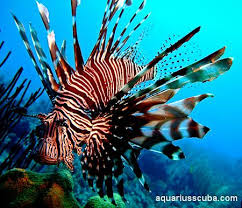
They are truly unique fish, and were even featured in Captain Picard’s aquarium in Star Trek, but the Fish and Wildlife service has seen the Red Lionfish as a threat to saltwater fish around Florida since the 1980’s. They originate from the Indo-Pacific region, but are now found across the Caribbean and eastern coast of the United States. It’s thought this spread first began because of the accidental release of six fish in 1992, and subsequently numerous aquarium enthusiasts who can’t look after them anymore decide to let them go in the ocean.
These fish are carnivores, so happily feed on small crustaceans and fish in their newvenvironment. They have large appetites, and will consume dozens of creatures in one feeding; drastically reducing numbers of other species. Part of their resilience is due to the fact that they have venomous spines, which also makes them dangerous to humans and mean they have no natural predators. Every new Lionfish that is released into a marine environment adds to this problem, so it’s vital that if you have a Lionfish you no longer want to try to find a new owner to adopt it. Setting it free just unleashes a whole chain of events you may not even realize.
1.
Snakes

The release of pet snakes into the wild has become a major problem across the United States. With people’s increasing interest in keeping exotic, non-native species, the effects of irresponsible owners releasing them in the wild is clear to see, especially across the Florida everglades. When you first get a snake it can be pretty easy to look after, but they soon grow much larger and can prove to be very difficult for owners. Quite often they’ll feel like they are doing their pet a favor by releasing it, instead of keeping it cooped up in a bathtub or something. But they are actually putting their pet in danger as well as the natural species that already live there.
Scientists are concerned about the prevalence of 9 different species across the U. S. that put over 150 other species at risk. Southern Florida, for example, is being overrun by tens of thousands of Burmese Pythons that eat virtually all birds and mammals in the area. They are even able to attack humans, but luckily these events are very rare. The warm climate of Florida means that the Burmese Pythons have been able to establish breeding populations in the wild, and so have boa constrictors and African Pythons. Once they have taken hold, there’s very little that can be done to remove them, so https://www.youtube.com/watch?v=U-VNYP16KYIit’s vital that people stop releasing them in the first place if we want the native species to have a chance at survival.
Conclusion
So please don’t release your aquarium fish into the wild. Have any crazy stories of finding former pets in the wild? Let us know in the comments below! Remember to subscribe and see you next time

